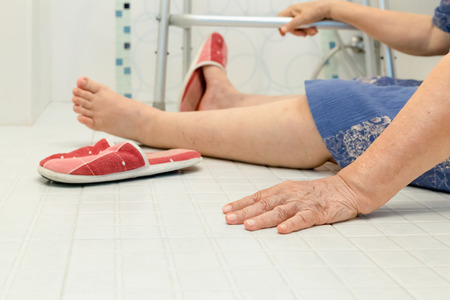With nearly a quarter of all the bones in your body residing in your feet, we at Long Island Foot & Ankle Group, PC know how important it is for patients to be informed about conditions that can weaken the bones. One of these is osteoporosis, a disease that occurs if your body makes too little bone, loses too much bone or both. It’s estimated that 10 million Americans have osteoporosis and another 44 million are at risk with low bone density.
If you suffer from osteoporosis, it’s essential to safeguard your feet and the rest of your body from falls to prevent fractures. Below are some tips for avoiding falls inside and out:
Inside the Home
- Keep items used most often within easy reach and on low shelves
- Get rid of throw rugs
- Remove electrical cords and computer and television cables from all walkways
- Install railings on both sides of the stairs
- Make sure there is adequate lighting in all rooms
Outside
- Be on the lookout when walking about for changing surfaces and pavement heights such as cutaways for wheelchairs
- Use backpacks and fanny packs to leave hands free for balance
- Don’t carry so many packages that your view of the path in front of you is obscured
- Turn on lights before you go out for the evening, so you are not trying to find your way into your home in the dark
- If pavement looks slick from rain or ice, walk in the grass next to the sidewalk instead
- Paint porch and deck steps with paint that has grit in it to prevent slipping
In many cases, a stress fracture in the foot will be the first tip-off that a patient has osteoporosis. Persistent pain in the forefoot—even if it is not constant—requires the attention of one of one of our foot and ankle surgeons, Dr. Russell Caprioli, Dr. Mary Ann Bilotti, Dr. John Haight or Dr. Marzana Mleczko. Contact our Valley Stream or Lake Success office by calling: (516) 825-4070 or (516) 327-0074 for an appointment if you have noticed a nagging pain in your foot that doesn’t seem to go away. It’s always better to come in sooner rather than later when you risk greater injury.
